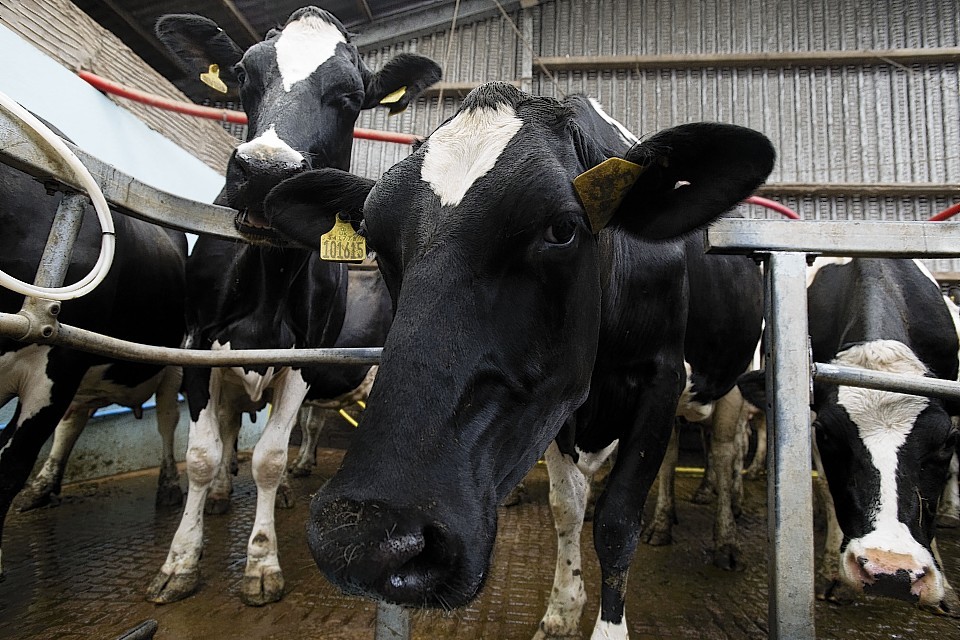Dairy farmers will soon be out blockading milk processing plants and supermarket depots following the latest round of milk price cuts.
In scenes reminiscent of 2012, when the UK dairy sector gathered together to fight against milk price cuts driven by a crash in the global cream price, farmers across the country are preparing for battle once more.
The movement, which became known as SOS Dairy, saw an unprecedented level of farmer co-operation with producers young and old gathering to call for a reverse in farmgate milk price cuts.
The unrest drove the creation of the Dairy Industry Voluntary Code of Practice, which aimed to improve relations between farmers and dairy firms. This is currently under review.
The latest call to action came from farm lobby group Farmers For Action (FFA), who led the SOS Dairy movement two years ago.
FFA chairman David Handley last night told Press and Journal Farming that protests were likely to begin next week, first in the south of England before spreading north to Scotland.
“I don’t want to see a single farmer protesting but there’s no choice,” said Mr Handley, who runs a dairy farm in Monmouthshire, south Wales.
“We believe we will make a difference, even if we only stop any other future price cuts.”
He said all processors – with the exception of co-operatives First Milk and Arla, unless their members asked for protests -would be targeted as well as Morrisons and the Co-op.
He accused the two retailers of putting “immense pressure” on processors in the procurement of milk, which in turn was driving down the farmgate price.
First Milk was the latest dairy processor to announce a cut to its milk price this week, following in the footsteps of Muller Wiseman, Arla and Tesco.
The UK dairy co-op announced plans to cut both its liquid and manufacturing pool price on November 1.
First Milk liquid producers face a 1p cut to 24.1p a litre, while those on a manufacturing contract face a 0.3p cut to 25.8p a litre. This follows a 3p cut to both prices from October 1.
The co-op’s chairman and former Defra farm minister Sir Jim Paice blamed the cut on downward trends in the dairy commodity market – the last three Global Dairy Trade auctions saw values fall.
“Additionally, our milk production shows no sign of slowing down, and we are up 10% over the last few weeks alone,” added Sir Jim.
“With our main sites operating close to maximum capacity, the vast majority of this additional volume is ultimately going into Westbury where net returns are below 20p a litre.”
Earlier in the week Muller Wiseman, which is the main milk buyer in the north and north-east, announced a 1.9p reduction in its milk price from November 1 to 27.1p a litre.
It blamed a slump in the value of cream and a farmgate milk volume glut for the cut.
While, last week dairy giant Arla and troubled retailer Tesco also announced milk price cuts.
Arla, which buys milk from one in four UK dairy farmers, announced a 1.67p cut to its standard litre price to 28.55p a litre, taking effect on Monday.
Tesco also set the price it will pay farmers for six months from November 1 to 32.01p a litre – down by 2.19p on the previous six months.
Given the fact Tesco’s aligned farmer suppliers are paid on a cost of production-based contract, prices south of 30p a litre for the majority of farmers indicate a gap between costs and income.
Mr Handley estimated the current average cost of production to be at least 30p a litre, warning of tough times ahead for many dairy farming families if prices continued to drop.
Worryingly the latest dairy market outlook from Rabobank does not paint a rosy picture.
Analyst Tim Hunt said: “All signs suggest that a prolonged period of low prices will be required in order to clear the international market.”
According to the European bank the value of internationally traded dairy commodities has already fallen by 30-45% since February, with “upward price momentum” unlikely to return before the third quarter of next year.
